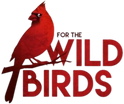The Dog Days of Summer or the Bird Days of Summer?
Whew! This summer is a Hot one! Have you asked yourself yet
Where did my birds go?
Well, let's talk about that. In these later Hot days of summer
things get a Lot hot and a little quiet. Many birds look bedraggled,
no longer quite as bright as they were a few months ago. At this
point a lot of birders hang up their binoculars until Fall Migration.
July and August are usually the two lowest months for birding.
This really isn't a reason to stop birding (or bird feeding), unless
of course it's just too hot out for you, which is understandable.
The birds are still around, they are just keeping a low profile,
finishing up nesting and replacing their feathers.
Birds sing basically for two reasons either to attract a mate or to
defend their territory. By July many birds in North America have
fledged, and even birds that have multiple broods are finishing up
by early August. Some birds continue singing through this time as
a way to teach their young to learn the local song dialect. But many
birds like the Red Winged Blackbird and the American Robin, stop
holding territories and start to join flocks, and territorial singing
isn't compatible with the flocking they participate in. One by one,
each species drops out of the morning chorus. So interesting!
After the breeding season comes the Molting season. ALL birds
do this. From the hummingbird to the penguins. They have to
molt in order to survive, because feathers wear out from physical
abrasion and bleaching from the sun. Once a year in the late
summer for temperate species birds grow an entirely new set of
feathers by completely molting.
When birds grow new flight feathers they are vulnerable to
predators. During molting of their wing feathers it produces gaps
in their wings that make them less powerful in flight. To avoid
attracting the attention of predators, many birds like sparrows,
warblers and thrushes lie low, calling infrequently and hiding.
Identifying birds during molting season can be pretty fun because
of how different they can look during this molting time. Watching
this is truly amazing. It will make you appreciate how birds prepare
for the long journeys of their fall migration.
In the midst of all of the above happening the Hummingbirds
will start to make their migration south around late July to early
September and should be gone from our area by the end of
September. So if your hummingbirds didn't hang around from
May-July then you might want to put your feeders back out at the
end of July to catch the migrating ones heading back south!! Just
imagine your backyard as a Petrol station for the hummingbirds
heading back south. They need to fill up on "gas" every so often
on their trip "home" AND they may thank you for it by returning
to your yard next spring to nest!!
Thank you Always for tuning in and being such great
customers. Without You we wouldn't be here.
Happy Birding,
Crinda Williams

